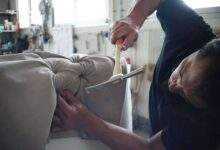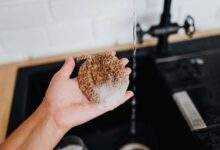Breathe New Life into Your Wardrobe: Upcycle Clothes with Easy DIY Repairs and Transformations

Table of Contents
Ever gazed longingly at your overflowing closet, wishing your clothes could spark joy again? Do you dream of a more sustainable fashion footprint, but worry about sacrificing style on the altar of eco-consciousness? Well, fret no more! This comprehensive guide unlocks the magic of upcycling, transforming your old clothes into unique, personalized treasures.
Upcycling isn’t just about saving money (although that’s a fantastic perk!). It’s about embracing creativity, reducing textile waste, and making a conscious choice for our planet. It’s about injecting personality into your wardrobe, turning tired trends into timeless statements. Whether you’re a seasoned sewing pro or a curious beginner, this guide empowers you to embark on your upcycling journey.
We’ll delve into simple repairs that extend the life of your favorite garments. We’ll explore creative transformations, breathing new life into forgotten clothes. From conquering common clothing catastrophes like ripped seams and missing buttons to unleashing your inner designer with imaginative transformations, this guide equips you with the knowledge and inspiration to become an upcycling champion.
So, grab that forgotten t-shirt or neglected pair of jeans, gather your tools (don’t worry, you won’t need a fancy sewing machine to get started!), and get ready to unlock the upcycling magic within!
The Power of Upcycling: Why Give Clothes a Second Chance?
A. Fast Fashion’s Flawed Footprint
Fast fashion, characterized by its rapid production cycles and low-cost garments, has significant environmental and ethical drawbacks. This model relies heavily on cheap labor and mass production, leading to poor working conditions and exploitation in garment factories. Additionally, the environmental impact is staggering. Fast fashion contributes to excessive water usage, chemical pollution, and high carbon emissions. The average American discards around 81 pounds of clothing annually, exacerbating textile waste in landfills.
Upcycling emerges as a sustainable solution to these issues. By repurposing old garments, we can reduce waste and lessen the demand for new clothing production. This practice not only conserves resources but also decreases the environmental footprint associated with fashion. Upcycling turns the throwaway culture on its head, encouraging consumers to view their wardrobes as dynamic and ever-evolving.
Relevant Resources:
B. Unlocking the Creativity Within
Upcycling is not just an environmentally friendly choice; it’s a creative outlet that allows for personal expression. Transforming old clothes into unique pieces can be immensely satisfying. Whether it’s turning a worn-out t-shirt into a trendy tote bag or adding decorative patches to jeans, the possibilities are endless. This creativity fosters a sense of accomplishment and uniqueness, as each upcycled piece becomes a one-of-a-kind item.
Cost-effectiveness is another compelling reason to embrace upcycling. Instead of constantly buying new clothes, you can breathe new life into what you already own. This approach saves money while still keeping your wardrobe fresh and stylish. By investing time in upcycling, you also gain valuable skills that can be applied to various DIY projects.
Relevant Resources:
- Refashionista
- Pinterest Upcycling Ideas
- YouTube DIY Clothing
C. A Sustainable Statement
Upcycling aligns with a broader environmental awareness and promotes sustainable living. Each small action, like mending a tear or transforming an old dress, contributes to reducing textile waste and promoting a more sustainable fashion industry. Individual actions can collectively lead to significant change, encouraging others to adopt eco-friendly practices.
For those looking to delve deeper into sustainable fashion, numerous resources are available. Websites, blogs, and social media platforms offer a wealth of information on ethical fashion brands and conscious consumerism. Engaging with these resources helps to stay informed and inspired, making it easier to make sustainable choices in everyday life.
Relevant Resources:
D. Building Your Upcycling Arsenal: Essential Tools & Supplies
To start your upcycling journey, you’ll need some basic tools and supplies. Here’s a list of essentials:
- Needle and Thread: Hand sewing is often sufficient for minor repairs and simple alterations.
- Scissors: Sharp fabric scissors are crucial for clean cuts and precise alterations.
- Sewing Machine (Optional): While not necessary, a sewing machine can speed up the process and handle more complex projects.
- Fabric Scraps: Useful for patching holes or adding decorative elements.
- Pins and Safety Pins: These help hold fabric in place while you sew.
- Measuring Tape: Accurate measurements ensure a better fit and finish.
- Seam Ripper: Essential for removing stitches and making adjustments.
- Iron and Ironing Board: Ironing seams and fabric helps achieve a polished look.
Acquiring upcycled materials can be both fun and economical. Thrift stores, garage sales, and even your own closet are great sources for fabric scraps and old clothes. High-quality sewing tools, though initially more expensive, provide better results and last longer, making them a worthwhile investment.
Relevant Resources:
- Thrift Stores Near You
- Etsy Vintage Sewing Supplies
- Sewing.com
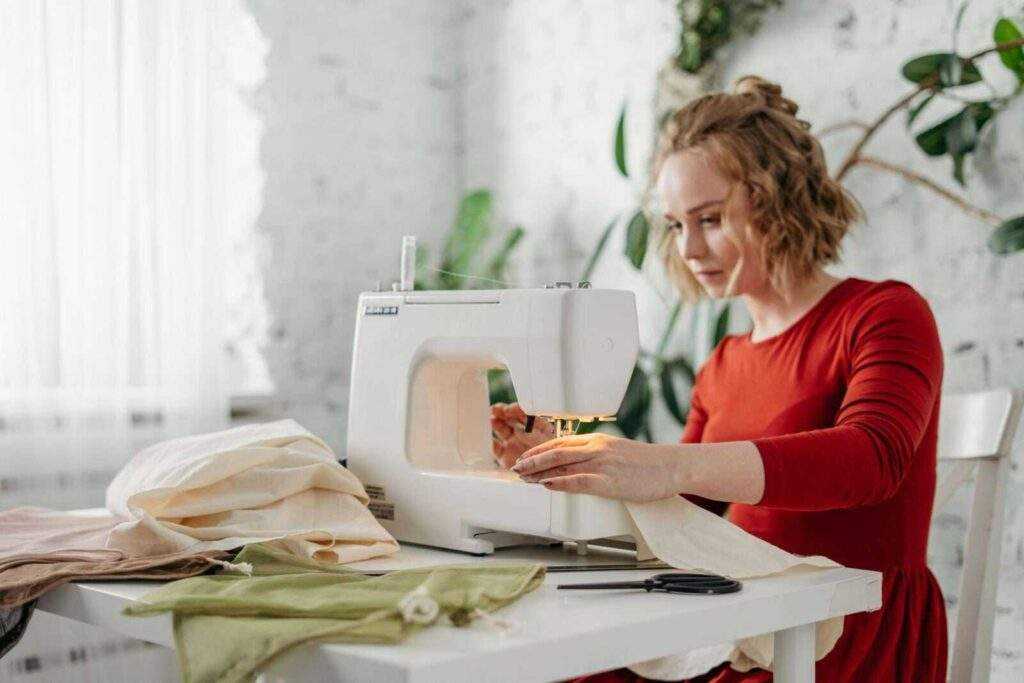
Conquering Common Clothes Catastrophes: Easy DIY Repairs
A. The Ripped Remedy: Mastering Simple Mends
Rips and tears in clothing are inevitable, but they don’t have to signal the end of your favorite pieces. Here’s how to fix them:
Fixing Ripped Seams and Tears:
- Thread a Needle: Choose a thread that matches the fabric color.
- Align the Edges: Pin the torn edges together.
- Stitching: Use a running stitch or backstitch for stronger seams. For visible mending, try decorative stitches like a blanket stitch.
- Reinforce: Add a patch behind the tear for extra durability.
Visible Mending Techniques:
Visible mending transforms repairs into design features. Use contrasting thread colors or decorative patches to turn a tear into a unique fashion statement.
Patching Techniques:
Patching is ideal for larger tears. Cut a patch from a similar or contrasting fabric, place it over the tear, and sew around the edges. This method strengthens the fabric and adds a stylish element to the garment.
Relevant Resources:
- The Spruce: How to Repair a Tear in Fabric
- Visible Mending
- YouTube Fabric Patching Tutorials
B. The Button Bonanza: Restoring Functionality and Style
Replacing missing or broken buttons is a straightforward repair that can restore both functionality and style to your clothes.
Guide to Replacing Buttons:
- Remove the Old Button: Use a seam ripper if needed.
- Thread the Needle: Knot the end of the thread.
- Position the Button: Place the button where the old one was or where you want the new one.
- Sewing: Push the needle through the fabric and buttonholes several times. Secure with a knot.
Sewing Techniques for Buttons:
For a secure attachment, use a shank button technique if the fabric is thick. Create a small thread shank by wrapping thread around the stitches between the button and fabric.
Embellishing with Buttons:
Buttons can also be decorative. Use colorful or unique buttons to add personality to plain garments. They can be sewn in patterns or used to create designs on clothing.
Relevant Resources:
- Sew Guide: How to Sew on a Button
- Craftsy: Button Sewing Basics
- Pinterest Button Embellishments
C. The Hemline Hero: Adjusting Lengths for a Perfect Fit
Hemming is essential for tailoring clothes to fit perfectly. Here’s how to hem pants, skirts, and dresses:
Hemming Pants:
- Measure: Determine the desired length and mark with chalk.
- Cut Excess Fabric: Leave an inch for the hem.
- Fold and Pin: Fold the edge twice to hide the raw edge and pin in place.
- Sew: Hand stitch or use a sewing machine to secure the hem.
Hemming Skirts and Dresses:
The process is similar to hemming pants. Ensure the hem is even by measuring all around the garment. Use a blind hem stitch for an invisible finish.
Different Hemming Techniques:
- Double Fold Hem: Simple and durable, suitable for most fabrics.
- Blind Hem: Almost invisible from the outside, ideal for dress pants and skirts.
- Rolled Hem: A narrow, delicate hem often used for lightweight fabrics like silk.
Relevant Resources:
- The Spruce: How to Hem Pants
- Craftsy: Hemming Skirts and Dresses
- YouTube Hemming Techniques
D. Zipper Zest: Bringing Back the Glide
Replacing a broken zipper can be daunting, but it’s manageable with some guidance.
Replacing a Broken Zipper:
- Remove the Old Zipper: Use a seam ripper to carefully remove the stitches.
- Position the New Zipper: Align it with the original placement and pin.
- Sew: Use a zipper foot on your sewing machine for precise stitching.
Troubleshooting Minor Zipper Issues:
For stuck zippers, try rubbing a bar of soap or a pencil along the teeth. If the pull tab is broken, replace it with a keyring or a small piece of fabric.
Relevant Resources:
- Sew4Home: How to Replace a Zipper
- The Spruce: Zipper Repair Tips
- YouTube Zipper Replacement
E. The Snag Savior: Removing Fabric Snags without Damage
Snags in knitwear or delicate fabrics can be unsightly but are easy to fix.
Removing Snags:
- Gently Pull: Use a needle or crochet hook to pull the snagged thread to the inside of the garment.
- Smooth the Fabric: Gently stretch the fabric around the snag to even it out.
Tools for Removing Snags:
- Sweater Shaver: Removes pills and fuzz from knitwear.
- Seam Ripper: Useful for pulling snags to the fabric’s interior.
Preventing Future Snags:
- Proper Washing: Use garment bags for delicate items.
- Careful Storage: Store knitwear folded rather than hanging to prevent stretching and snags.
Relevant Resources:
- The Spruce: How to Fix a Snag
- YouTube Snag Removal Tutorials
- Real Simple: Sweater Care Tips
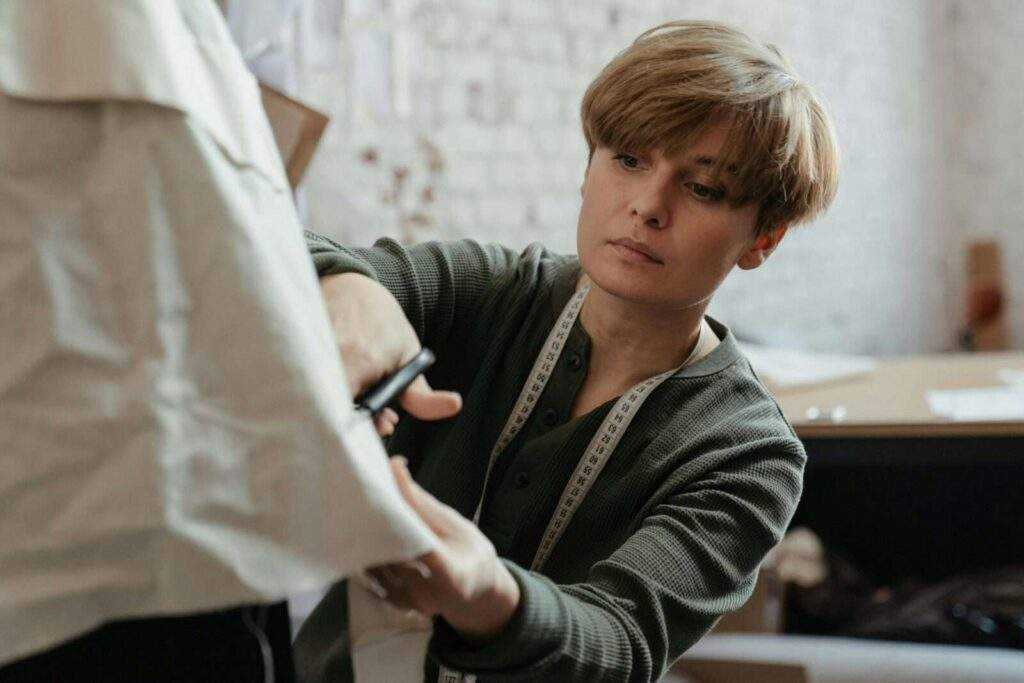
Unleashing Your Inner Designer: Creative Clothing Transformations
A. T-shirt Transformation Extravaganza
Old t-shirts can be upcycled into various new items.
Upcycling Ideas:
- Crop Tops: Cut the t-shirt to the desired length and hem the edge.
- Tote Bags: Cut off the sleeves and neckline, sew the bottom shut, and add handles.
- Headbands: Cut strips from the t-shirt and braid them together.
Skill Levels:
- No-Sew Projects: Simple cutting and tying techniques.
- Sewing Projects: More advanced projects involving sewing.
Inspiration:
- Pinterest T-shirt Upcycling
- YouTube T-shirt DIYs
- Craftsy: T-shirt Upcycling Ideas
B. Denim Delight: Revamping Jeans and Jackets
Denim is durable and versatile, making it perfect for upcycling.
Upcycling Jeans:
- Shorts: Cut jeans to the desired length and hem the edges.
- Skirts: Combine denim from multiple pairs of jeans to create a patchwork skirt.
- Embroidered Patches: Sew on patches or embroider designs for added style.
Distressing Denim:
- Safety Precautions: Use sandpaper, a cheese grater, or scissors to create rips and frays. Always work in a well-ventilated area and wear gloves.
Embellishing Denim Jackets:
- Patches and Buttons: Sew on patches, add buttons, or paint designs to revamp an old denim jacket.
Relevant Resources:
- Pinterest Denim Upcycling
- YouTube Denim DIYs
- Craftsy: Denim Upcycling Ideas
C. The Dress Doctor: Giving New Life to Dresses and Skirts
Transform old dresses and skirts into new fashion pieces.
Upcycling Ideas:
- Skirts from Dresses: Cut off the top of a dress and add a waistband to create a skirt.
- Tops from Dresses: Remove the bottom of a dress and hem the raw edge to create a top.
- Adding Sleeves or Altering Necklines: Sew on new sleeves or adjust necklines for a fresh look.
Upcycling Children’s Dresses:
Turn outgrown dresses into new garments like skirts or tops for children.
Relevant Resources:
- Pinterest Dress Upcycling
- YouTube Dress DIYs
- Craftsy: Dress Upcycling Ideas
D. Beyond Basics: Upcycling for Special Occasions
Transform old clothes into unique pieces for special events.
Special Occasion Ideas:
- Dressy Tops: Convert shirts into elegant tops by adding sequins or lace.
- Party Skirts: Use tablecloths or other large pieces of fabric to create festive skirts.
- Embellishments: Add beads, sequins, or other decorations to elevate your upcycled pieces.
Upcycling Accessories:
Create matching accessories like scarves or jewelry to complete your outfit.
Relevant Resources:
- Pinterest Special Occasion Upcycling
- YouTube Special Occasion DIYs
- Craftsy: Special Occasion Upcycling Ideas
E. Dyeing Adventures: Adding Color and Vibrancy
Dyeing clothes at home can refresh old garments and add unique colors.
Dyeing Techniques:
- Tie-Dye: Create patterns by tying sections of fabric before dyeing.
- Dip Dyeing: Dip parts of the garment in dye for a gradient effect.
- Ombre Dyeing: Gradually dip fabric in dye to create a fading color effect.
Natural Dyeing:
Use plants or food scraps like onion skins or avocado pits for eco-friendly dyeing.
Safety Precautions:
Wear gloves and work in a well-ventilated area. Follow dye manufacturer instructions for the best results.
Relevant Resources:
- Rit Dye
- The Spruce: How to Dye Fabric
- YouTube Dyeing Tutorials

The Upcycling Journey Continues: Tips, Inspiration, and Beyond
A. Building Your Upcycling Confidence
Starting with small projects can build confidence and skills.
Encouragement:
- Start Small: Begin with simple projects like mending or basic alterations.
- Learn by Doing: Embrace mistakes as learning opportunities.
- Celebrate Success: Acknowledge your progress and completed projects.
Resources:
- Tutorials: Find video tutorials on YouTube or sewing blogs.
- Communities: Join online communities for support and inspiration.
Relevant Resources:
- YouTube Sewing Tutorials
- Reddit: r/VisibleMending
- Sewing Blogs
B. Sourcing Your Upcycling Treasures
Finding materials is a key part of upcycling.
Tips for Finding Materials:
- Thrift Stores: Look for affordable clothing and fabric.
- Garage Sales: Discover hidden gems at low prices.
- Clothing Swaps: Exchange clothes with friends for new upcycling projects.
Upcycling Parties:
Host a party where friends bring old clothes and work on upcycling projects together.
Relevant Resources:
- The Thrift Shopper
- Garage Sale Finder
- Buy Nothing Project
C. Upcycling for a Cause
Upcycling can also benefit charitable causes.
Creating Items for Donation:
- Charity Projects: Make items like blankets or hats to donate.
- Impact: Help those in need while reducing waste.
Resources:
Find organizations that accept handmade donations and get involved in community projects.
Relevant Resources:
D. Looking Beyond Clothes: Upcycling Inspiration in Everyday Life
Upcycling can extend beyond clothing.
Other Upcycling Ideas:
- Fabric Scraps: Use scraps for quilting or making small accessories.
- Furniture: Repurpose old furniture with paint or new upholstery.
- Containers: Turn jars or cans into storage solutions or decorative items.
Inspiration:
Search for DIY up cycling projects online to find new ideas and challenges.
Relevant Resources:
- Pinterest Upcycling
- YouTube Upcycling Projects
- DIY Network: Upcycling Ideas
E. Staying Motivated and Connected
Keeping up the momentum is important for ongoing upcycling success.
Staying Inspired:
- Follow Influencers: Engage with upcycling influencers on social media for fresh ideas.
- Join Challenges: Participate in upcycling challenges to push your skills.
- Document Your Journey: Share your projects on social media or start a blog to inspire others.
Relevant Resources:
- Instagram Upcycling Hashtags
- Facebook Upcycling Groups
- Blogging Platforms
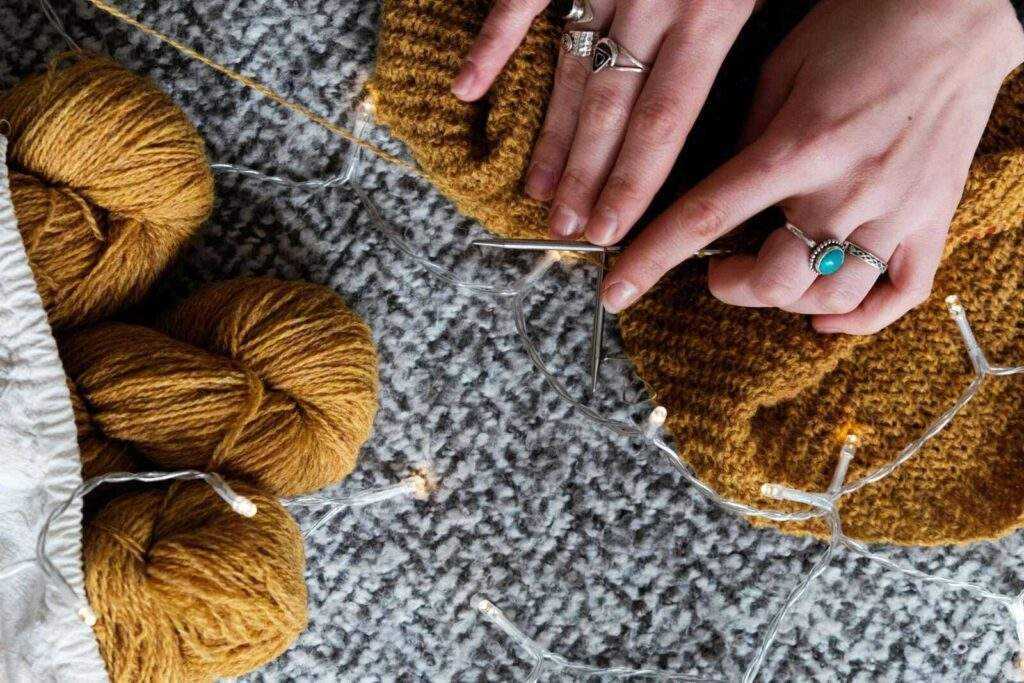
Farewell Fast Fashion, Hello Upcycled Treasures!
Congratulations! You’ve completed your upcycling transformation journey. You’ve not only given your clothes a new lease on life, but you’ve also taken a powerful step towards a more sustainable wardrobe. The satisfaction of wearing a garment you’ve upcycled yourself is truly unmatched. You’ve transformed a forgotten piece into a reflection of your unique style and environmental consciousness.
But the journey doesn’t end here! Share your upcycling triumphs with friends and family. Inspire them to join the movement. Consider organizing upcycling parties, swapping clothes for potential projects, or even exploring upcycling for other household items. Let’s build a community of conscious consumers who embrace creativity, celebrate individuality, and prioritize sustainability.
Remember, every upcycled piece is a victory for your wardrobe and a win for the planet. So, keep those sewing needles sharp, unleash your creativity, and continue to breathe new life into your clothing! Together, we can rewrite the narrative of fast fashion and usher in a new era of conscious style.
Upcycling FAQs: Unleash Your Inner Fashion Alchemist!
Embarking on your upcycling adventure is exciting! Here are some common questions you might have to get you started:
1. What if I’m a complete sewing beginner? Can I still upcycle clothes?
Absolutely! Upcycling offers projects for all skill levels. We’ll provide detailed instructions for basic repairs and no-sew transformations. Many projects require just a needle, thread, and some creativity. As you progress, you can explore more advanced sewing techniques.
2. What tools do I need for upcycling?
You don’t need a fancy sewing machine to get started! Basic tools like a needle, thread, scissors, seam ripper, and fabric scraps will take you far. For some projects, a sewing machine can be helpful, but it’s not always essential.
3. Where can I find clothes for upcycling?
Thrift stores and garage sales are treasure troves for upcycling projects! Consider asking friends or family for unwanted clothes. You can even repurpose garments you already own but no longer wear.
4. What fabrics are best for upcycling?
Natural fibers like cotton, linen, and denim are generally easier to work with for beginners. However, with some practice, you can upcycle synthetic materials as well.
5. I’m worried about making mistakes. What happens if I mess up?
Embrace the learning process! Upcycling is all about experimentation. Don’t be afraid to make mistakes – they’re often stepping stones to creative solutions. Sewing mistakes can sometimes be fixed, and even “flaws” can add a unique charm to your upcycled piece.
6. Is upcycling clothes really eco-friendly?
Absolutely! By giving clothes a second life, you’re reducing textile waste and the environmental impact of fast fashion. Upcycling often involves using readily available materials, further minimizing your environmental footprint.
7. How can I wash and care for my upcycled clothes?
Always check the care label of the original garment for washing instructions. For any embellishments or repairs, consider handwashing or using a gentle cycle to ensure longevity.
8. I’m feeling uninspired. Where can I find upcycling ideas?
There’s a vibrant online community dedicated to upcycling! Explore blogs, social media groups, and online tutorials for endless inspiration. Pinterest is a fantastic resource for visual inspiration.
9. What if a project seems too complicated?
Break it down into smaller steps. Many online tutorials offer step-by-step guides with clear instructions and photos. Start with simpler projects and gradually build your confidence.
10. Is there a way to upcycle clothes for kids?
Absolutely! Upcycling is perfect for kids’ clothes, as they tend to outgrow them quickly. You can transform old clothes into smaller garments for them or even create adorable accessories like headbands or stuffed animals. Upcycling teaches children valuable lessons about sustainability and creativity!


